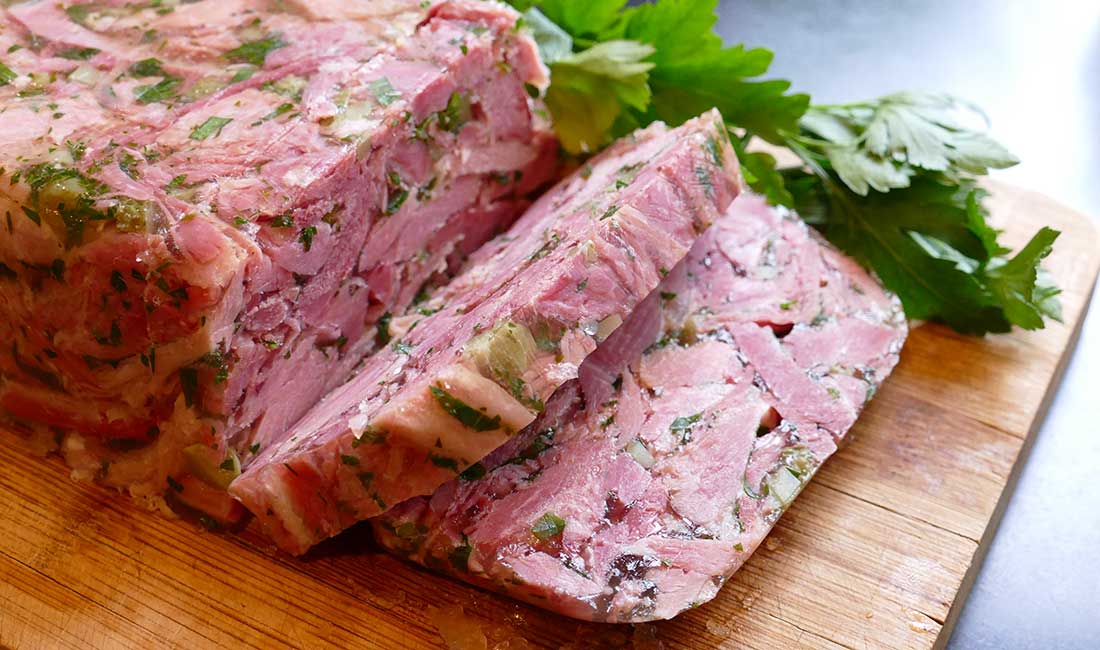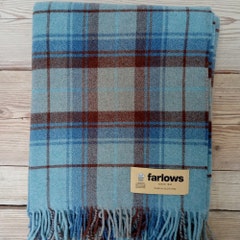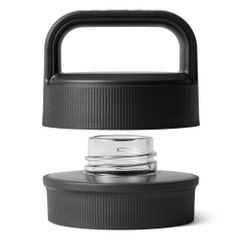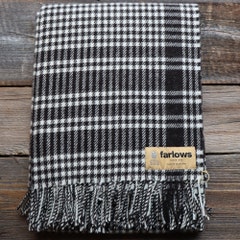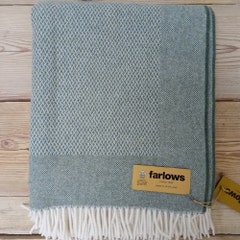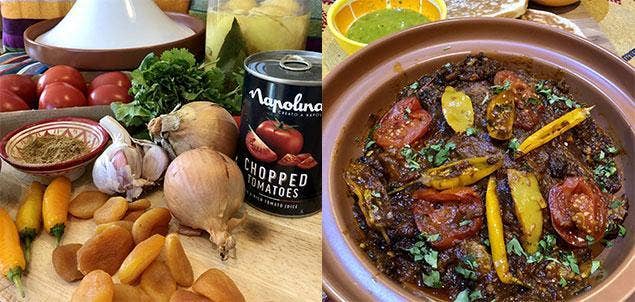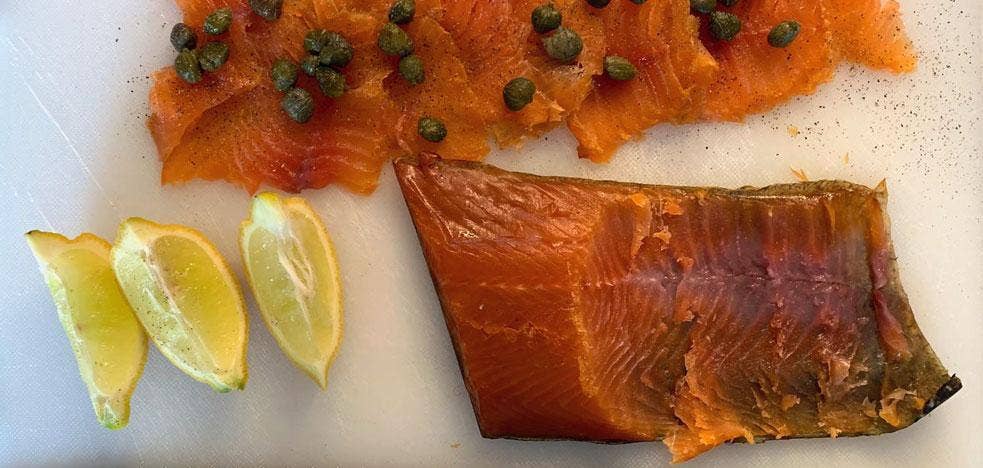Picnics should be one of the simplest of pleasures, needing no more than a rug and a sandwich, the latter enhanced to gourmet standard by open air surroundings, company and the novelty of eating with sand or grass between one’s toes. But somehow these days they often turn into more elaborate affairs, less about the picnic itself and more about the event. Whether it’s at the races or school sports days there are always sights to be seen in the car park at lunchtime. Out come the tables and chairs, tablecloths, vases of flowers, wine buckets and even, I kid you not, candelabra. Ever more elaborate dishes are arranged on said table and dished out elegantly onto china plates, to be eaten with silver cutlery, accompanied by something very chilled (and probably fizzy) in a glass.
I think it’s undeniable that these days there is an element of competition at these events and I wonder how much pleasure is gained by spending picnic time glancing at other peoples’ displays, wishing that you’d thought to bring placement cards or edible flowers for the water jug and wondering how on earth you’re going to pack up all those crystal glasses safely for the journey home…
I gave up trying to compete long ago - I’m simply not organised enough - and anyway that way madness lies and, I’m sure, a great deal less fun. However, one must accept that these days the event-led picnic is unavoidable and there is at least something I can do to make sure we not only avoid humiliation for the simplicity of our set up but actually elicit envious glances – and that is to provide the perfect picnic food. That doesn’t mean anything terribly elaborate, indeed it’s often much better if it isn’t, but it does need to fulfil some basic criteria.
Top Tips for Picnic Food
Good picnic food should be: easily transportable; unlikely to spoil or spill from being bumped around whilst being driven across a field; edible with fingers, or at the most with just a fork; designed to eat cold so you can enjoy it at its best; finally, of course, it must be completely delicious.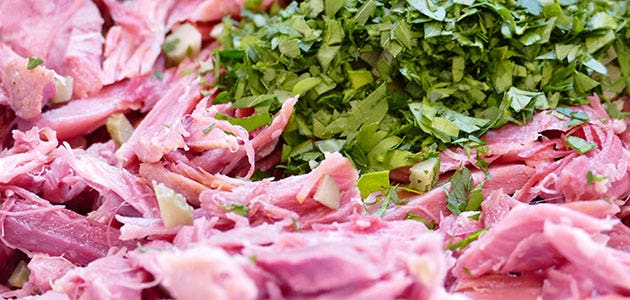 Preparing the terrine mixture
Preparing the terrine mixtureWe should assume that the weather is going to be glorious so all the dishes I describe have been designed very much with summer in mind. There is something unmistakably British about sitting in a field in shorts or a flimsy dress bravely ignoring the goosebumps and I’ll never forget sports day at my son’s school last year when most of the food ended up floating. So, whilst on some picnics we might long for a hearty stew or bowl of warming soup I shall assume that this year the weather will play fair.
Start with Gazpacho
Indeed, as I write, we have just emerged from one of the hottest weeks I can remember. The idea of wearing socks or eating anything hot seemed ludicrous so it has been an excellent few days to be thinking about summery food for picnics. One of my favourites that I have been particularly delighted to rehearse is gazpacho. I think this is absolutely the best way to start a picnic when you’re not quite ready with everything else but the crowd is getting a bit hot, hungry and restless. It is wonderfully easy to transport in a thermos and having taken a mere moment to pour the vibrant liquid into a (plastic) glass you can provide them with something instantly chilling and surprisingly satisfying.There are probably as many recipes for gazpacho in the world as there are school sports days. Some of them involve pages of ingredients and complicated techniques but mine takes a simple approach. I simply deseed about 500g of large, ripe tomatoes (putting the seeds in a sieve over a bowl to catch their juices while I prep everything else) and add them to a blender along with a deseeded and chopped red pepper, a sliced spring onion and a quarter of a peeled and chopped cucumber. To this I add about 50g stale white bread (or crumbs), 1 tbsp sherry vinegar, 1 tbsp sugar and some basil leaves. If you like you can shake in some Tabasco too. All this gets thoroughly blended and then let down with a bit of cold water (about 100ml or to taste) and checked for seasoning; it will almost certainly need some salt. However, if you’re going to take it on a picnic, instead of adding water the best thing is to stick it in a thermos flask with a few ice cubes which will help keep it all chilled both in the flask and when you hand it over, in glasses, to your hot and hungry picnickers.
What about the Main Course?
Onto the main course and I generally try to minimise the number of elements involved. Not only do I always run out of Tupperware but the fewer I use the fewer need to be washed up and it’s just so much simpler when you’re working on a rug not to be juggling multiple components.A quiche or tart (the latter much less embarrassing to admit to liking) is of course a perennial favourite on picnics, they fulfil all the criteria listed above and the flavour combination possibilities are endless. To ring the changes a bit I like a smoked haddock and pancetta tart, challenging salmon’s inevitable position as the most usual fish to see on a picnic.
The haddock is poached gently in whole milk for ten minutes and then the milk, when cooled, can be combined with double cream and eggs to form the savoury custard filling. For this kind of occasion, I am slightly less obsessive than usual about having wafer thin pastry as I like to be able to eat this with my fingers, rather than with a fork. I usually add some crisped pancetta to the blind baked pastry case before flaking in the haddock, pouring over the creamy filling and baking. For non-meat eaters, you could add some watercress leaves instead. Or use both! The great thing about anything involving pastry is that you don’t absolutely need to serve potatoes with it to fill everyone up, just some green leaves or spears of asparagus.
If, like me, you adore coronation chicken but are a bit reluctant to be seen serving it (the retro card only works so often), a friend of mine introduced me to a marvellous variation. Flakes of poached chicken are stirred through a mixture of mayonnaise, mango and lots of mint all of which have been blitzed thoroughly together. It’s a vibrant dish full of sunshine in both colour and flavour and brings an old favourite completely up to date. This of course goes perfectly well with rice but I think one can afford to be a bit more creative. A salad of giant couscous, quinoa or bulgar wheat would be lovely and the inclusion of interesting spices, lots of herbs and some blanched green vegetables would make it more than adequate as a main dish for any vegetarians and means there’s no need for a separate salad, one less thing to pack.
I’m currently preparing for my son’s sports day again, and praying that we won’t need an ark this year. As usual, many families from his year will gather together at lunch time, all bringing a dish to share with everyone else. Last time I took a salmon pithivier, which is another brilliant picnic dish, managing to be elegant and practical at the same time. A mix of cubed salmon, watercress leaves, spring onions and crème fraiche are piled on to a round of puff pastry and a second, slightly larger, round is draped over the top and sealed around the edges. It is all then egg washed and a small hole speared in the middle of the dome. Traditionally, a pithivier has score marks curving from the hole at the top down to the sealed edge and this does look very decorative when it comes out of the oven. It can be cut simply into slices like a cake and is particularly good with some watercress mayonnaise.
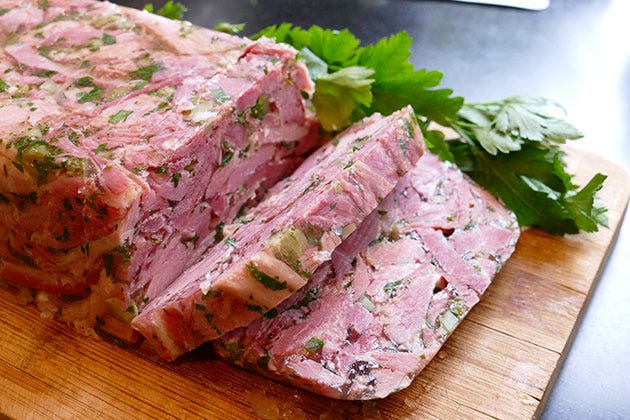 Annie's ham hock terrine
Annie's ham hock terrineThis year I’m making my all-time favourite picnic food, ham hock terrine. This has been one of my desert island recipes for a while and never disappoints. It’s easy to make, can be taken to your picnic in a terrine tin, turned out onto a board when you’re there and any leftovers (unlikely though they are) easily put back into the terrine to take home again. It doesn’t need anything more than some bread to go with it and looks almost embarrassingly impressive on your picnic rug (or table if you insist). It’s just ham hock, one of the humblest of ingredients, but presented in a way that really will put a serious dent in the superior looks of your picnicker neighbours with the candelabra.
Before I get to the recipe, I should mention puddings for picnics: Brownies and hulled but whole strawberries or raspberries. That’s all.
Ham Hock Terrine Recipe
Serves 82 large ham hocks (unsmoked) 1 large onion 2 carrots 2 sticks celery 5 or 6 peppercorns 1 clove garlic 4 bay leaves 1 bunch parsley 2 leaves gelatine 6 cornichon (baby gherkins)
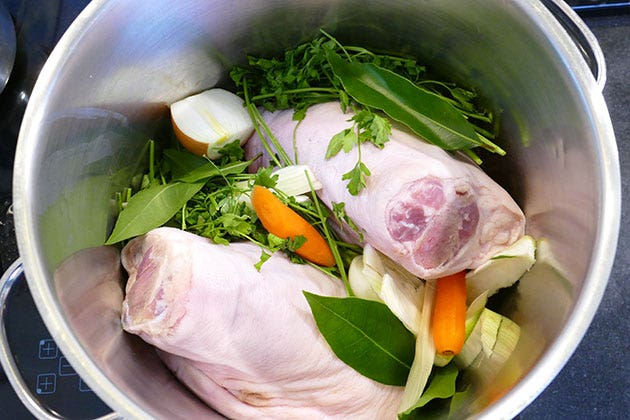 Preparing the hocks
Preparing the hocks- Put the ham hocks in a large pan with the onion (quartered but not peeled), carrots (peeled and cut into bite-size pieces) and celery (each stick divided into 3) and add the garlic clove, bay leaves and the stalks of the parsley (reserve the leaves).
- Bring it to a boil and then simmer very gently for 3 hours. By then the meat should be tender with the bones almost falling out when you give them a gentle tug. It is important that it shouldn’t boil as the meat will be tough and the stock cloudy.
- Allow the hocks to cool in the stock and then remove them, reserving 400ml of stock, and take off the fat and flake the meat into a bowl.
- Cut the cornichon into 4 lengthways, chop into small pieces and add to the bowl. Finely chop the parsley leaves and add them too.
- Have a taste of the ham hock to see if it needs any seasoning; it is unlikely to need salt but you might like to add a grind of pepper.
- Put the leaves of gelatine to soak in cold water for 5 minutes. Warm about 100ml of the reserved stock until just coming to the boil and when the leaves are soft, squeeze them out and add them (off the heat) to the warmed stock. Stir well until the gelatine has completely dissolved and then add the rest of the stock to the pan.
- Line a terrine tin with a double layer of cling film. It helps to rinse the terrine with some water first and then just give it a shake. The cling film will attach itself brilliantly to the damp metal making the whole exercise far less traumatic than it can be. Transfer the ham hock, cornichon and parsley mix to the terrine and then pour over the stock and gelatine mixture until the meat is almost completely covered.
- The terrine needs to be pressed so, unless you happen to have a second terrine of the same size, I find it easiest to cut out a piece of cardboard to fit inside the top and cover it with foil. This sits directly on top of the meat and you can then fold the edges of the cling film over the top so it is all completely enclosed. Put it in the fridge overnight with something heavy on top.
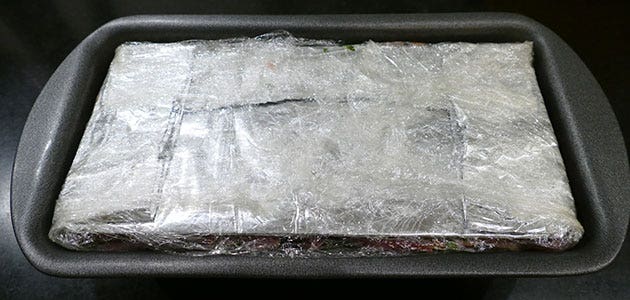 Pressing and refrigerating the terrine
Pressing and refrigerating the terrineThis might all sound a bit involved but it really is straightforward and for most of the time the ham hock is getting on with things very happily on its own. Picking the meat is the work of moments because it should all be falling off the bone anyway. Necessarily it all needs to be done at least the day before, if not earlier, so there’s nothing last minute to worry about. I transport it still wrapped and then just whip it out of the tin and onto a board when I’m ready to impress. Use a very sharp knife to cut into 2cm slices.
Annie Assheton's good picnic guide looks at the best ways to enhance one of life’s simple pleasures, without having to ‘keep up with the Jones’s’.
Picnics should be one of the simplest of pleasures, needing no more than a rug and a sandwich, the latter enhanced to gourmet standard by open air surroundings, company and the novelty of eating with sand or grass between one’s toes. But somehow these days they often turn into more elaborate affairs, less about the picnic itself and more about the event. Whether it’s at the races or school sports days there are always sights to be seen in the car park at lunchtime. Out come the tables and chairs, tablecloths, vases of flowers, wine buckets and even, I kid you not, candelabra. Ever more elaborate dishes are arranged on said table and dished out elegantly onto china plates, to be eaten with silver cutlery, accompanied by something very chilled (and probably fizzy) in a glass.
I think it’s undeniable that these days there is an element of competition at these events and I wonder how much pleasure is gained by spending picnic time glancing at other people's displays, wishing that you’d thought to bring placement cards or edible flowers for the water jug and wondering how on earth you’re going to pack up all those crystal glasses safely for the journey home…
I gave up trying to compete long ago - I’m simply not organised enough - and anyway that way madness lies and, I’m sure, a great deal less fun. However, one must accept that these days the event-led picnic is unavoidable and there is at least something I can do to make sure we not only avoid humiliation for the simplicity of our set up but actually elicit envious glances – and that is to provide the perfect picnic food. That doesn’t mean anything terribly elaborate, indeed it’s often much better if it isn’t, but it does need to fulfil some basic criteria.
Top Tips for Picnic Food
Good picnic food should be: easily transportable; unlikely to spoil or spill from being bumped around whilst being driven across a field; edible with fingers, or at the most with just a fork; designed to eat cold so you can enjoy it at its best; finally, of course, it must be completely delicious.
We should assume that the weather is going to be glorious so all the dishes I describe have been designed very much with summer in mind. There is something unmistakably British about sitting in a field in shorts or a flimsy dress bravely ignoring the goosebumps and I’ll never forget sports day at my son’s school last year when most of the food ended up floating. So, whilst on some picnics we might long for a hearty stew or bowl of warming soup I shall assume that this year the weather will play fair.
Start with Gazpacho
Indeed, as I write, we have just emerged from one of the hottest weeks I can remember. The idea of wearing socks or eating anything hot seemed ludicrous so it has been an excellent few days to be thinking about summery food for picnics. One of my favourites that I have been particularly delighted to rehearse is gazpacho. I think this is absolutely the best way to start a picnic when you’re not quite ready with everything else but the crowd is getting a bit hot, hungry and restless. It is wonderfully easy to transport in a thermos and having taken a mere moment to pour the vibrant liquid into a (plastic) glass you can provide them with something instantly chilling and surprisingly satisfying.
There are probably as many recipes for gazpacho in the world as there are school sports days. Some of them involve pages of ingredients and complicated techniques but mine takes a simple approach.
I simply deseed about 500g of large, ripe tomatoes (putting the seeds in a sieve over a bowl to catch their juices while I prep everything else) and add them to a blender along with a deseeded and chopped red pepper, a sliced spring onion and a quarter of a peeled and chopped cucumber.
To this I add about 50g stale white bread (or crumbs), 1 tbsp sherry vinegar, 1 tbsp sugar and some basil leaves. If you like you can shake in some Tabasco too.
All this gets thoroughly blended and then let down with a bit of cold water (about 100ml or to taste) and checked for seasoning; it will almost certainly need some salt. However, if you’re going to take it on a picnic, instead of adding water the best thing is to stick it in a thermos flask or bottle with a few ice cubes which will help keep it all chilled both in the flask and when you hand it over, in glasses, to your hot and hungry picnickers.
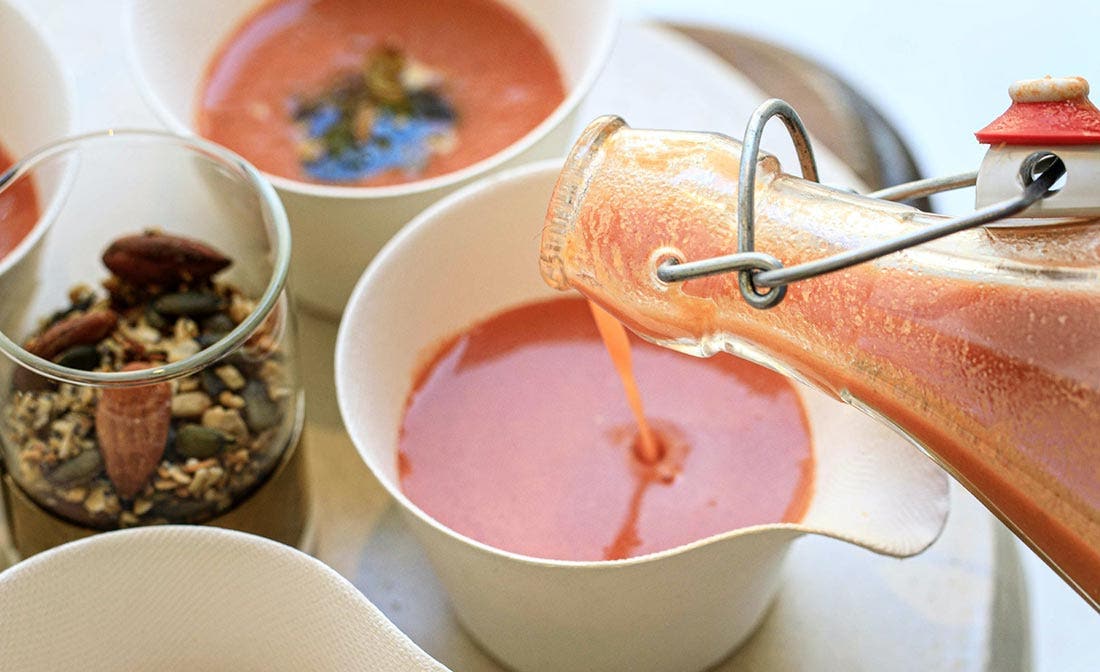

What about the Main Course?
Onto the main course and I generally try to minimise the number of elements involved. Not only do I always run out of Tupperware but the fewer I use the fewer need to be washed up and it’s just so much simpler when you’re working on a rug not to be juggling multiple components.
A quiche or tart (the latter much less embarrassing to admit to liking) is of course a perennial favourite on picnics, they fulfil all the criteria listed above and the flavour combination possibilities are endless. To ring the changes a bit I like a smoked haddock and pancetta tart, challenging salmon’s inevitable position as the most usual fish to see on a picnic.
The haddock is poached gently in whole milk for ten minutes and then the milk, when cooled, can be combined with double cream and eggs to form the savoury custard filling. For this kind of occasion, I am slightly less obsessive than usual about having wafer thin pastry as I like to be able to eat this with my fingers, rather than with a fork. I usually add some crisped pancetta to the blind baked pastry case before flaking in the haddock, pouring over the creamy filling and baking. For non-meat eaters, you could add some watercress leaves instead. Or use both! The great thing about anything involving pastry is that you don’t absolutely need to serve potatoes with it to fill everyone up, just some green leaves or spears of asparagus.
If, like me, you adore coronation chicken but are a bit reluctant to be seen serving it (the retro card only works so often), a friend of mine introduced me to a marvellous variation. Flakes of poached chicken are stirred through a mixture of mayonnaise, mango and lots of mint all of which have been blitzed thoroughly together. It’s a vibrant dish full of sunshine in both colour and flavour and brings an old favourite completely up to date.
This of course goes perfectly well with rice but I think one can afford to be a bit more creative. A salad of giant couscous, quinoa or bulgar wheat would be lovely and the inclusion of interesting spices, lots of herbs and some blanched green vegetables would make it more than adequate as a main dish for any vegetarians and means there’s no need for a separate salad, one less thing to pack.
I’m currently preparing for my son’s sports day again and praying that we won’t need an ark this year. As usual, many families from his year will gather together at lunch time, all bringing a dish to share with everyone else. Last time I took a salmon pithivier, which is another brilliant picnic dish, managing to be elegant and practical at the same time.
A mix of cubed salmon, watercress leaves, spring onions and crème fraiche are piled on to a round of puff pastry and a second, slightly larger, round is draped over the top and sealed around the edges. It is all then egg washed and a small hole speared in the middle of the dome. Traditionally, a pithivier has score marks curving from the hole at the top down to the sealed edge and this does look very decorative when it comes out of the oven. It can be cut simply into slices like a cake and is particularly good with some watercress mayonnaise.
This year I’m making my all-time favourite picnic food, ham hock terrine. This has been one of my desert island recipes for a while and never disappoints. It’s easy to make, can be taken to your picnic in a terrine tin, turned out onto a board when you’re there and any leftovers (unlikely though they are) easily put back into the terrine to take home again. It doesn’t need anything more than some bread to go with it and looks almost embarrassingly impressive on your picnic rug (or table if you insist). It’s just ham hock, one of the humblest of ingredients, but presented in a way that really will put a serious dent in the superior looks of your picnicker neighbours with the candelabra.
Before I get to the recipe, I should mention puddings for picnics: Brownies and hulled but whole strawberries or raspberries. That’s all.
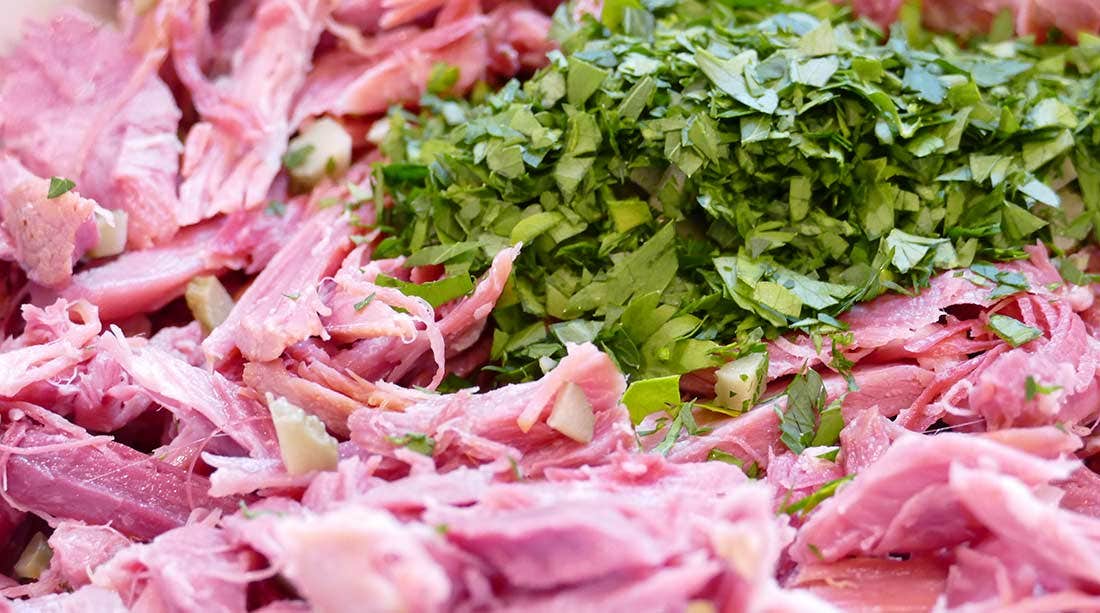

HAM HOCK TERRINE RECIPE
Serves 8
2 large ham hocks (unsmoked)
1 large onion
2 carrots
2 sticks celery
5 or 6 peppercorns
1 clove garlic
4 bay leaves
1 bunch parsley
2 leaves gelatine
6 cornichon (baby gherkins)
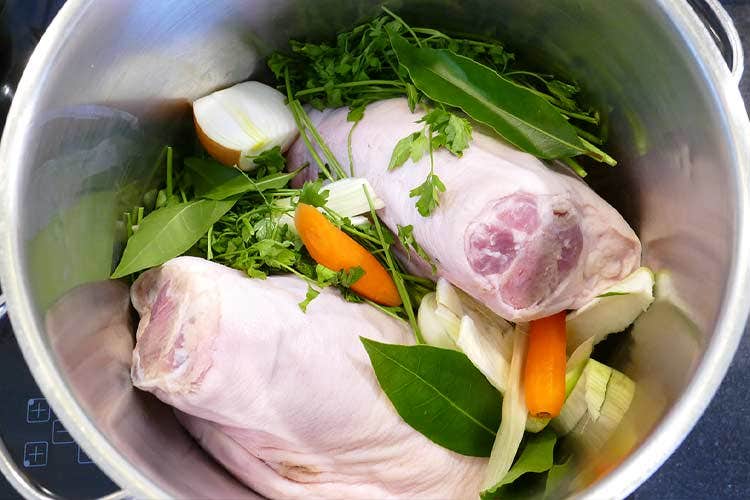

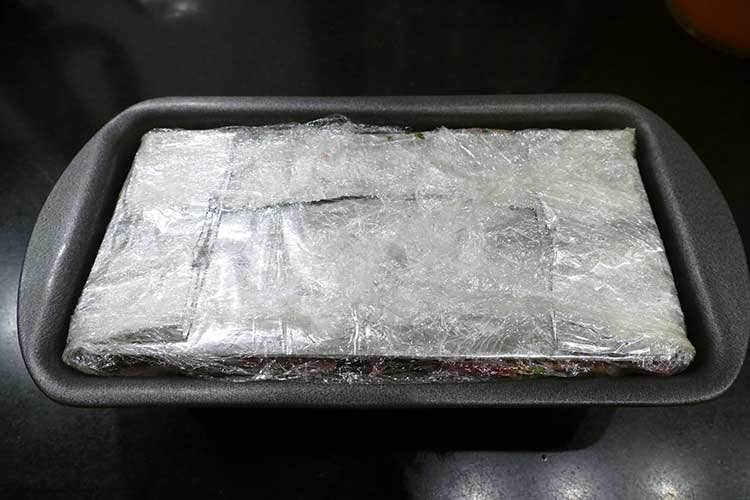

- Put the ham hocks in a large pan with the onion (quartered but not peeled), carrots (peeled and cut into bite-size pieces) and celery (each stick divided into 3) and add the garlic clove, bay leaves and the stalks of the parsley (reserve the leaves).
- Bring it to a boil and then simmer very gently for 3 hours. By then the meat should be tender with the bones almost falling out when you give them a gentle tug. It is important that it shouldn’t boil as the meat will be tough and the stock cloudy.
- Allow the hocks to cool in the stock and then remove them, reserving 400ml of stock, and take off the fat and flake the meat into a bowl.
- Cut the cornichon into 4 lengthways, chop into small pieces and add to the bowl. Finely chop the parsley leaves and add them too.
- Have a taste of the ham hock to see if it needs any seasoning; it is unlikely to need salt but you might like to add a grind of pepper.
- Put the leaves of gelatine to soak in cold water for 5 minutes. Warm about 100ml of the reserved stock until just coming to the boil and when the leaves are soft, squeeze them out and add them (off the heat) to the warmed stock. Stir well until the gelatine has completely dissolved and then add the rest of the stock to the pan.
- Line a terrine tin with a double layer of cling film. It helps to rinse the terrine with some water first and then just give it a shake. The cling film will attach itself brilliantly to the damp metal making the whole exercise far less traumatic than it can be. Transfer the ham hock, cornichon and parsley mix to the terrine and then pour over the stock and gelatine mixture until the meat is almost completely covered.
- The terrine needs to be pressed so, unless you happen to have a second terrine of the same size, I find it easiest to cut out a piece of cardboard to fit inside the top and cover it with foil. This sits directly on top of the meat and you can then fold the edges of the cling film over the top so it is all completely enclosed. Put it in the fridge overnight with something heavy on top.
This might all sound a bit involved, but it really is straightforward and for most of the time the ham hock is getting on with things very happily on its own. Picking the meat is the work of moments because it should all be falling off the bone anyway. Necessarily it all needs to be done at least the day before, if not earlier, so there’s nothing last minute to worry about. I transport it still wrapped and then just whip it out of the tin and onto a board when I’m ready to impress. Use a very sharp knife to cut into 2cm slices.
